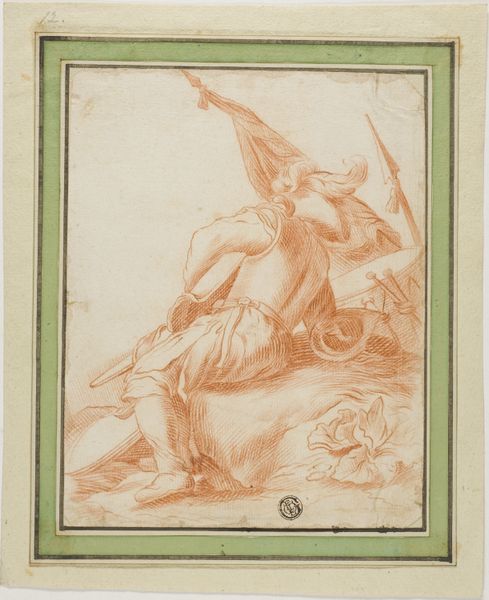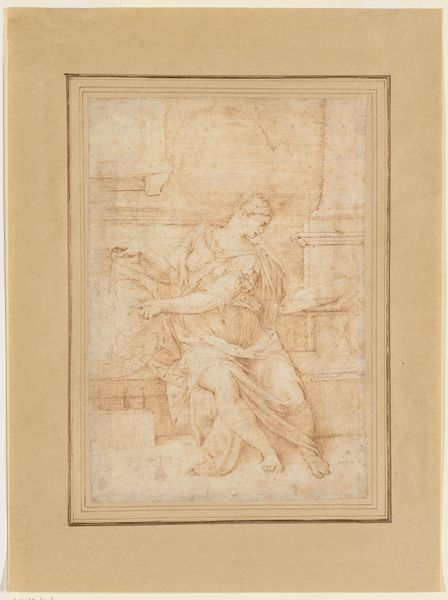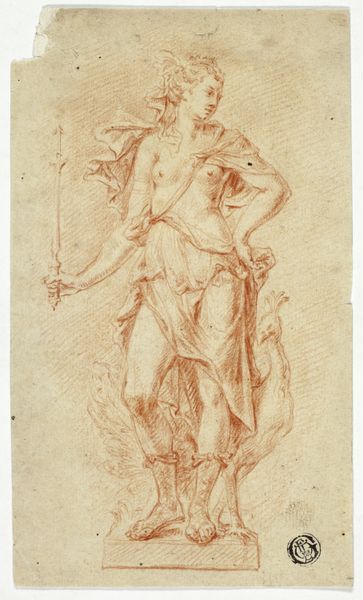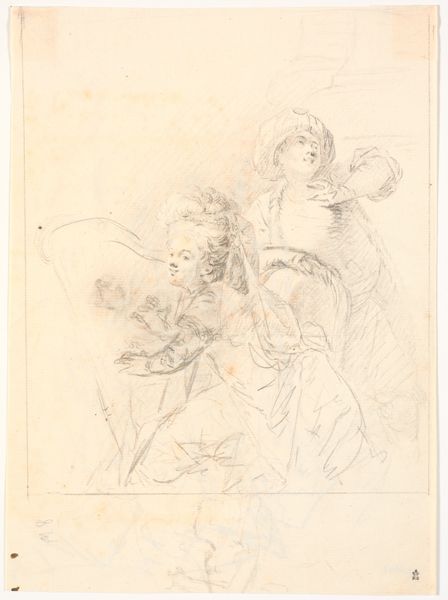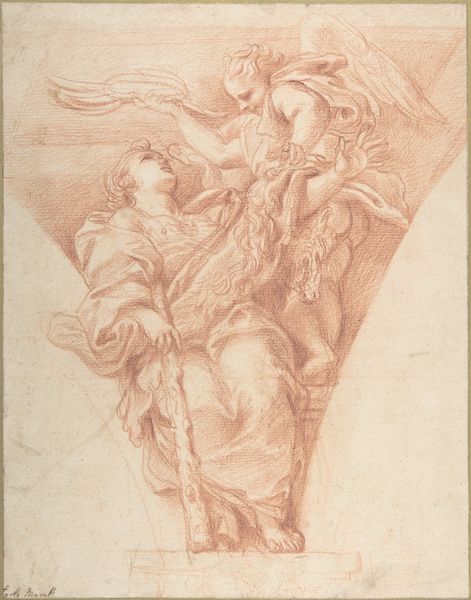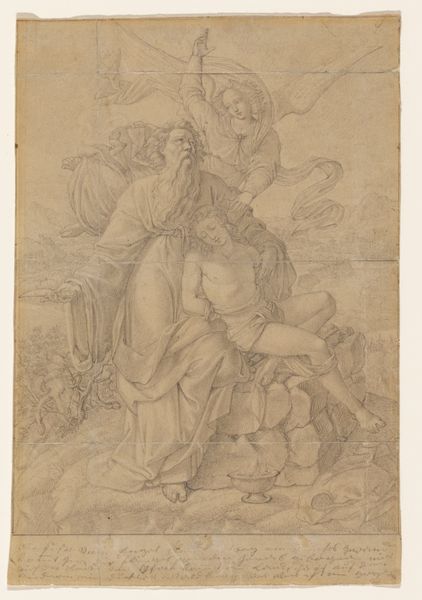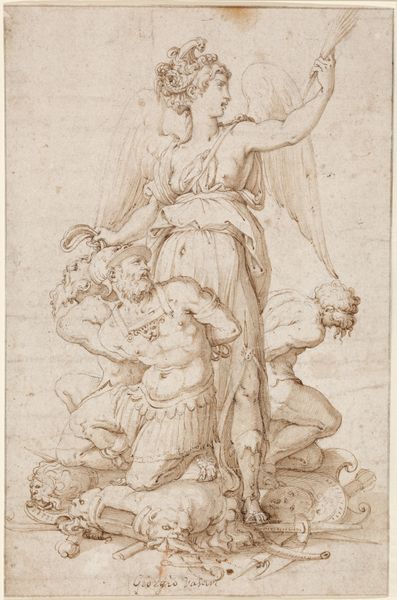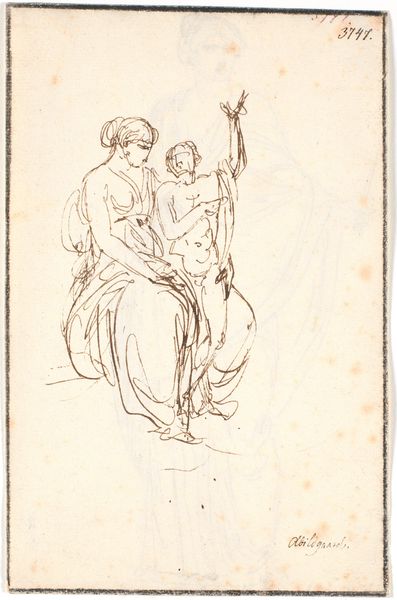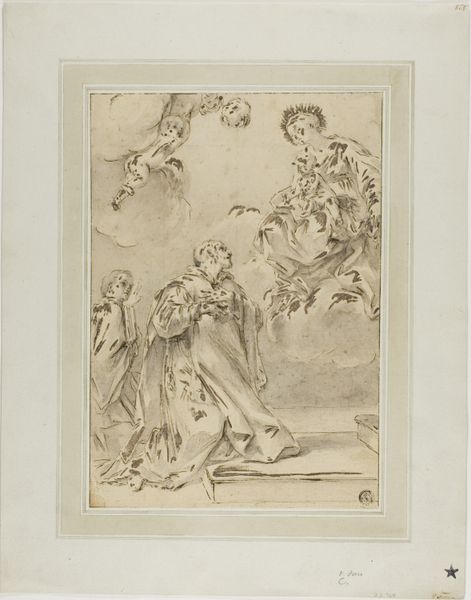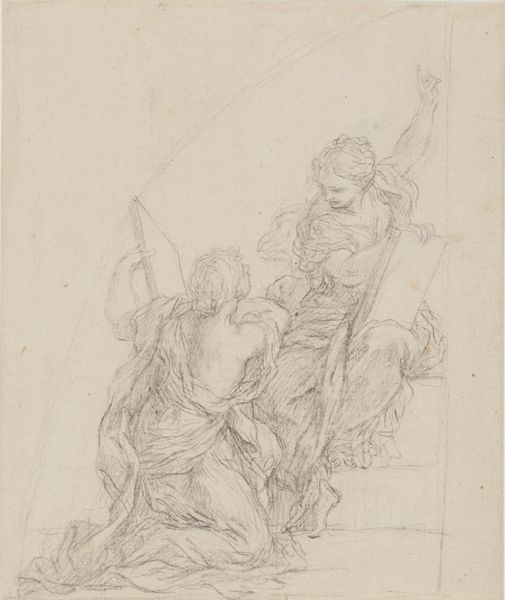
drawing, print, etching
#
drawing
#
allegory
#
baroque
# print
#
etching
#
classical-realism
#
etching
#
child
#
men
#
history-painting
Dimensions: 12 11/16 x 8 13/16 in. (32.2 x 22.4 cm)
Copyright: Public Domain
Editor: Here we have "La Guerre," or "War," by Edme Bouchardon, dating from sometime between 1700 and 1770. It's an etching printed in red ink. It feels very…classical, but the red gives it this surprising warmth. What jumps out at you when you look at it? Curator: Formally, observe the dynamic interplay of line and form. The figure's draped garment, rendered with fluid, curvilinear strokes, juxtaposes against the sharp, angularity of her helmet and the spear. How does the artist create depth and movement within this limited color palette? Editor: Well, the cape billowing behind her adds depth, and the cross-hatching gives the fabric volume. I see how the strong, clear lines define the main figure. Curator: Precisely. The composition centers on the robust figure, doesn’t it? And the figure, an allegory of war, carrying the attributes of her power. Note the deliberate placement of the child figure too. The etching's effectiveness relies less on color and more on the calculated arrangement of forms within the pictorial space. Editor: The child almost seems to tug at the woman. Is it supposed to represent innocence? Curator: Potentially. Consider how the artist used contrasting textures. The smooth, exposed skin of the child against the coarse rendering of the fabric. It makes one ask, is the contrast designed to elevate one above the other, or to force a question? Editor: I hadn't thought about the textures. It makes the war allegory more complex; it isn't just a celebration of strength. Curator: Precisely. Bouchardon manipulates visual language to offer us, potentially, multiple readings within a seemingly straightforward allegory. I’m delighted you observed the contrasts as key components to understanding. Editor: I see it completely differently now. Focusing on the lines and the texture really brings out the nuance of the allegory.
Comments
No comments
Be the first to comment and join the conversation on the ultimate creative platform.
